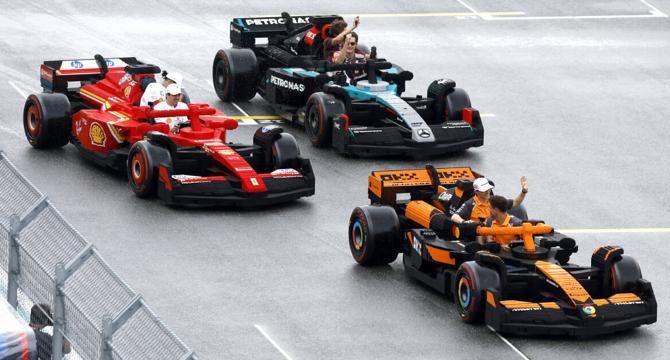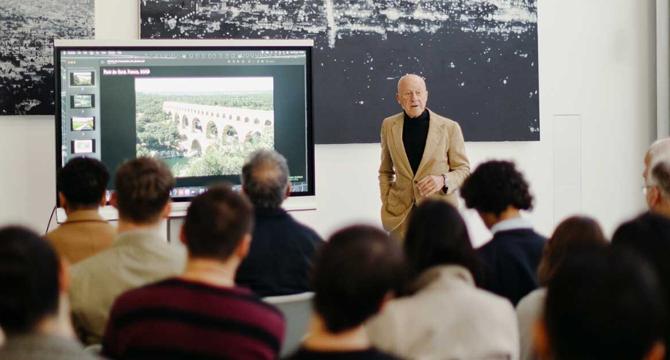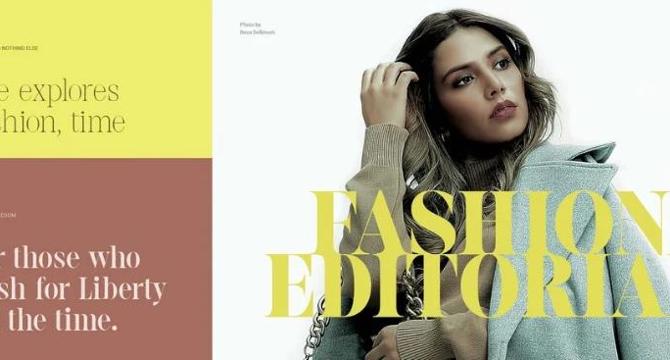Web Design
Designweek
356

Dog wash brand mud embraces mess and muck with reactive identity
- London-based designers Angelina Pischikova and Karina Zhukovskaya launch pet care brand 'mud' embracing dogs' natural instincts.
- Their first product, The Everyday Wash for Dirty Dogs, is plant-based and aims to capture the essence of real dog experiences.
- The brand was inspired by the lack of authenticity in the pet care sector, aiming for high-quality products and design.
- The name 'mud' was chosen to symbolize the nature of dogs and their inevitable return to dirt.
- The brand's identity, including color palette and logo, reflects the concept of mud and changes based on the weather.
- The brand's punchy tone of voice emphasizes authenticity and rejects cliches often associated with pet care products.
- Photography in the launch campaign showcases real dogs being themselves, promoting genuine connection between owners and pets.
- Pischikova and Zhukovskaya faced challenges in finding suppliers and manufacturers to meet their creative vision for the brand.
- Future plans for mud include expanding the product line and working to change perceptions around pet care and human-animal relationships.
Read Full Article
21 Likes
UX Design
210

Image Credit: UX Design
Is it even possible to create a delightful experience in B2B/SaaS?
- Many B2B software users find tools like CRM or project management necessary but not enjoyable to use compared to social apps or games that are used for fun.
- Designing B2B SaaS products with a focus on usefulness and value can lead to improved user engagement and potentially higher revenue.
- Incorporating delight into work tools can change them from mandatory tools to preferred solutions, enhancing the overall user experience and productivity.
- 5 tactics discussed in this article include speeding up workflows with automation and AI to make tasks more efficient and enjoyable for users.
Read Full Article
12 Likes
UX Design
200

Image Credit: UX Design
From ‘How might we?’ to ‘Why should we?’
- The concept of 'How might we?' was introduced by Procter & Gamble in 1971 and adopted by IDEO as a problem-solving format.
- It reframes problems as opportunities for innovation by focusing on user needs and fostering collaboration.
- While 'How might we' is powerful when the problem is well-understood, it may lead to wasted effort if the foundation is shaky.
- An alternative approach involves breaking down problems into smaller components in an agile environment.
- Transitioning from 'How might we?' to 'Why should we?' helps in understanding the bigger picture and purpose behind solving a problem.
- The 'Why should we?' approach forces a reverse engineering perspective by questioning the existing features.
- By answering 'Why should we', teams can develop more focused and impactful 'How might we' statements.
- This process ensures that solutions not only fix immediate issues but also prevent future problems and cater to broader user needs.
- Established problem-solving methodologies emphasize the importance of asking 'Why?' before 'How?', promoting a deeper exploration of possibilities.
- Overall, shifting the focus from 'How might we?' to 'Why should we?' enhances the problem-solving process and results in more strategic and impactful solutions.
Read Full Article
12 Likes
Designboom
124

Image Credit: Designboom
national gallery’s sainsbury wing reopens with transparent entrance by selldorf in london
- The National Gallery in London has debuted its renewed main entrance designed by Selldorf Architects on May 10.
- The new entrance includes a public forecourt, clear glass elements, and improved orientation and lighting inside the building.
- This renovation is part of the NG200 Welcome program for the National Gallery's 200th anniversary, aiming to enhance the visitor experience.
- The project involved collaboration with heritage architects, Purcell, and landscape designers, Vogt, to create a more vibrant and accessible space.
Read Full Article
7 Likes
Discover more
- Programming News
- Software News
- Devops News
- Open Source News
- Databases
- Cloud News
- Product Management News
- Operating Systems News
- Agile Methodology News
- Computer Engineering
- Startup News
- Cryptocurrency News
- Technology News
- Blockchain News
- Data Science News
- AR News
- Apple News
- Cyber Security News
- Leadership News
- Gaming News
- Automobiles News
Designboom
254

Image Credit: Designboom
FMG & iris ceramica’s surfaces revive reykjavík’s mall from the food court to the cinema
- The iconic shopping mall Kringlan in Reykjavík underwent a complete renovation of its third floor, combining entertainment, social life, and design elements with ceramic surfaces from FMG Fabbrica Marmi e Graniti and Iris Ceramica.
- Around 5,000 square meters of ceramics were utilized for the flooring, wall coverings, and kitchen and bathroom facilities, chosen for their durability, safety, and diverse visual aspects.
- Kringlan, Iceland's first indoor shopping mall since 1987, holds significance for the population, offering not just shopping but also social activities.
- The renovation of Kringlan's third floor aimed to enhance urban leisure spaces and included over 20 catering outlets, a bistro, a multi-screen cinema, and an entertainment area, all featuring porcelain stoneware surfaces.
- Ceramics played a key role in defining the new spaces, with various designs like Pietra di Sciara and Venice Villa creating unique atmospheres within the renovated area.
- FMG's full-body ceramics like Palladio were chosen for the high-traffic play area designed with Oché, ensuring durability without compromising aesthetics.
- Restrooms were meticulously designed, incorporating vibrant colors, graphic elements, and ceramic features like Elementi Rivestimenti to create visually appealing spaces.
- The cinema area now boasts barrier-free access to concessions and a luxurious VIP room with high-quality ceramic surfaces supporting both functionality and comfort.
- The collaboration with FMG Fabbrica Marmi e Graniti and Iris Ceramica showcases how material choices can define the spirit of a place, blending beauty, practicality, and emotional resonance.
- The renovation of Kringlan reinforces its role as a symbol of contemporary Reykjavík, embodying resilience, social engagement, and openness to innovation.
Read Full Article
15 Likes
Dev
380

Image Credit: Dev
Transparency in Web Development: The Secret to Your Success
- Transparency in web development is crucial for success in the digital age, as it builds trust and enhances user experience.
- Clarity, confidence, and conversions are interconnected in the trust equation, emphasizing the importance of clear communication.
- Practical tips for creating transparency in web development include using purposeful CTAs, being upfront about data usage, showing helpful error messages, implementing progress indicators, and avoiding surprise redirects and pop-ups.
- Transparency is a long-term strategy that fosters trust, leading to increased user engagement, conversions, and referrals in the online domain.
Read Full Article
22 Likes
Designboom
423

Image Credit: Designboom
translucent fabric binds horizon pavilion’s arrayed metal frame atop of ecuador hillside
- Horizon Pavilion, designed by Eletres Studio, is located at the highest point on the campus of the Catholic University of Santiago de Guayaquil in Ecuador.
- The pavilion functions as an experimental urban observatory, offering extended views of the cityscape and creating a spatial framework for visual engagement.
- The structure is inspired by the catenary curve, featuring an inverted configuration with two linear circulation spaces and a central opening along the axis for passage.
- Constructed with ten modular M-shaped units and a lightweight, translucent roof, the pavilion stands 4.5 meters high and integrates into the natural environment characterized by arid vegetation and rock formations.
Read Full Article
25 Likes
Designboom
329

Image Credit: Designboom
mark reigelman’s oversized hand sculpture captures runoff water from overpass in texas
- Falling Water is a public sculpture by Mark Reigelman located beneath an overpass in San Antonio, Texas, designed to catch, redirect, and filter contaminated runoff water from the overpass.
- Constructed from weathering steel, Falling Water serves both a functional and sculptural purpose, transforming a practical necessity into a landmark at the intersection of urban infrastructure and nature.
- The sculpture's elevated hand gesture symbolizes stewardship and care, offering protection to pedestrians and sustaining the surrounding ecosystem by filtering runoff water.
- Mark Reigelman's Falling Water bridges the gap between the built and natural environments, blending into the landscape with evolving patina and native plant encirclement, showcasing the harmony between public art, infrastructure, and nature.
Read Full Article
19 Likes
Designboom
129

Image Credit: Designboom
full-size F1 cars made of LEGO bricks drive around miami grand prix
- Full-size, drivable F1 cars made of LEGO blocks completed a lap around the Miami Grand Prix, created in collaboration with F1 and all 10 teams on the grid.
- Each LEGO F1 car consists of nearly 400,000 bricks, weighs around 1,500 kilos, and can reach speeds of up to 20 km/h, showcasing authentic soft-racing Pirelli tires.
- A team of 26 designers, engineers, and LEGO builders spent over 22,000 hours setting up the 10 drivable vehicles in the LEGO Group’s Kladno factory in the Czech Republic.
- The design of the LEGO F1 cars emphasized accurate team color palettes, sponsor branding, and functional components like working wheels, drive mechanisms, and operator controls.
Read Full Article
7 Likes
Designboom
22

Image Credit: Designboom
inaugural venice climate week to spotlight global sustainability and climate solutions
- Venice will host the inaugural Venice Climate Week from June 3rd to 8th, 2025, focusing on global sustainability and climate solutions.
- The environmental conference, developed by Riccardo Luna and the Future Food Institute, aims to foster dialogue on redesigning our relationship with the planet.
- The event will feature nearly 100 speakers from various fields discussing empathetic design solutions and regenerative economic models for environmental sustainability.
- Venice Climate Week aligns with World Environment Day and World Oceans Day, emphasizing the interconnectedness of environmental challenges and the importance of terrestrial and marine ecosystems.
Read Full Article
1 Like
Designweek
436

How to get paid on time
- Cashflow is crucial for businesses, and dealing with late-paying clients can be challenging.
- Late payment issues often stem from disorganization rather than malice.
- Running credit checks on new clients and having clear contracts in place are recommended practices.
- Establishing invoicing processes and negotiating payment terms upfront is essential for smoother transactions.
- Including penalties for late payments in terms and conditions can serve as a deterrent.
- Effective communication and clarity in invoicing procedures are key to avoiding payment delays.
- Maintaining regular follow-ups on invoice status and payment dates is crucial to ensure timely payments.
- Ceasing work if payments are overdue can be a strategic move to prompt clients to settle their dues.
- In cases of non-payment, considering clauses in contracts to protect intellectual property or taking a diplomatic approach can be options.
- Being firm yet empathetic when dealing with late payers can help in resolving payment issues.
- Being prepared to walk away from problematic clients and taking proactive measures in credit control can mitigate payment risks.
Read Full Article
26 Likes
Designboom
111

Image Credit: Designboom
entries open for norman foster institute’s 2026 master’s programme on sustainable cities
- The Norman Foster Institute's 2026 Master’s Programme on Sustainable Cities is open for applications from graduate students and professionals from various fields. The program runs from January to December 2026 in Madrid, offering scholarships based on talent, academic excellence, and financial need.
- Founded in London in 1999, the Norman Foster Foundation shapes future urbanism by promoting interdisciplinary research and educational programs. The Foundation's focus is on architecture, infrastructure, and urbanism's impact on daily life, preparing future civic leaders for challenges based on data-driven insights.
- The 2026 Master's Programme on Sustainable Cities extends its reach to pilot cities across Asia, Europe, and Latin America. Divided into three stages—Foundations, Diagnosis, and Interventions—the program equips students with skills in leadership, advocacy, data analysis, and urban interventions, culminating in presentations to city administrations.
- The 2026 edition of the program introduces specializations in City Science, Urban Design, and Architecture, incorporating data-driven methods, community-focused urban design, and sustainable architectural concepts. Successful graduates will receive a Master's Degree Diploma certified by the Universidad Autónoma de Madrid and signed by prominent leaders.
Read Full Article
6 Likes
Designbeep
428

Image Credit: Designbeep
Free Font Of The Day – Meshed Display
- Free fonts have revolutionized design by providing access to quality typefaces without financial barriers.
- MESHED Display is a meticulously crafted Rational Serif font with a distinct personality characterized by bold vertical strokes and delicate horizontal lines.
- Ideal for larger sizes, MESHED Display captivates the audience with its intricate details.
- To access the font, visit Designbeep for the Free Font Of The Day – Meshed Display.
Read Full Article
25 Likes
Designweek
62

The commercialisation of the working-class creative
- The article discusses the impact of commercialization on working-class creativity, highlighting the author's personal journey in the design industry.
- Growing up in a creative household, the author was immersed in the practical side of design, where creativity had to serve a purpose and be employable.
- Despite early success and industry recognition, the author realized the limitations of commercial design in stifling personal expression.
- The divide between design education in the North and South of England is examined, with Northern students often pushed towards real-world employability.
- Northern graduates excel in practical skills but may lack the freedom to explore bold, unconventional ideas due to financial pressures and job security concerns.
- The article calls for structural changes in design education to offer working-class students more funding and time to experiment without risking financial stability.
- It emphasizes the need to value working-class creativity beyond commercial outcomes and to create space for diverse voices in the creative industry.
- The article advocates for a more inclusive approach that allows creatives from all backgrounds to dream, experiment, and express themselves freely.
- By challenging the norms of commercial design and supporting creativity for the sake of artistry, the industry can become richer and more representative.
- The author, Harriet Richardson, urges for a shift towards celebrating creativity in its various forms, promoting inclusivity and empowerment in the creative field.
- In conclusion, the article calls for a reevaluation of how creativity is valued and encourages the industry to provide equal opportunities for all creatives to thrive.
Read Full Article
3 Likes
Designbeep
401

Image Credit: Designbeep
Best Office Suites for Teams and Businesses in 2025
- Microsoft 365, Google Workspace, LibreOffice, Apple iWork Suite, Zoho Workplace, WPS Office, and OnlyOffice are among the top office suites for teams and businesses in 2025.
- Microsoft 365 offers a robust suite with flagship applications like Word, Excel, PowerPoint, and Outlook, packed with AI integration and seamless cross-platform synchronization.
- Google Workspace emphasizes collaboration and accessibility, providing tools like Docs, Sheets, Slides, and Gmail with strong cloud integration and AI features.
- LibreOffice stands out as a free open-source alternative with applications like Writer, Calc, Impress, and compatibility with Microsoft file formats.
- Apple iWork Suite caters to macOS and iOS users, offering Pages, Numbers, Keynote, and iCloud integration for a seamless experience within the Apple ecosystem.
- Zoho Workplace targets business productivity with applications like Writer, Sheet, Show, Mail, and integration with Zoho's CRM and business tools.
- WPS Office provides strong compatibility with Microsoft formats, lightweight installation, and PDF editing capabilities across multiple platforms.
- OnlyOffice focuses on collaborative editing and document management, offering features like Document Editor, Spreadsheet Editor, Presentation Editor, and Form Creator.
- When choosing an office suite, consider factors like compatibility requirements, collaboration needs, platform preferences, budget constraints, and specific feature requirements.
- Testing free trials or basic versions of different suites can help in selecting the best productivity tools tailored to your work needs.
Read Full Article
24 Likes
For uninterrupted reading, download the app